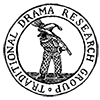"Taking Shetland out of the Box : Island Cultures and Shetland Identity" was an international conference held at the Shetland Museum in Lerwick in May 2009. The first in a planned series of conferences on the theme of Island Dynamics, it brought together academics working in a diverse range of fields, from folklore to economics, as well as representatives from politics, tourism and the arts. While many of the presentations were concerned specifically with Shetland, the conference was devoted to exploring the experiences and issues that link geographically and culturally insular communities worldwide. Its central theme was the role of islands as meeting-places for cultures and the influence of these meetings on local identity. The event was jointly organised by the Elphinstone Institute, University of Aberdeen; the Centre for Nordic Studies, University of the Highlands and Islands Millennium Institute; and the Shetland Museum and Archives.
Two of the sessions featured during the conference focused on aspects of traditional drama in the context of island cultures and identities.
The session on Guising Traditions opened with Linda Riddell’s paper on the Shetland winter festival of Up-Helly-Aa, in which she discussed the various interpretations of the festival’s origins and significance that have been propounded in the many popular and scholarly accounts of this tradition. This was followed by Joy Fraser’s analysis of the custom of Christmas mumming and its associations with violence in mid-nineteenth-century Conception Bay, Newfoundland, based on evidence from recently uncovered contemporary trial documents. Terry Gunnell concluded the session with an exploration of the nature and function of guising on the Shetland islands of Yell, Unst and Fetlar, which he contextualised within a wider international framework of Nordic mumming practices.
The conference also featured a session on the Papa Stour Sword Dance, which began with a paper by Paul Smith detailing the life of Dr James Scott of Melby and assessing his contribution to the early documentation of the Sword Dance tradition. Michael J. Preston then presented his analysis of the early textual history of the dance, in the form of a close comparison of Samuel Hibbert’s published account from 1822 and the description given in James Scott’s manuscript. This session was preceded by a performance of the dance organised by Mr George P.S. Peterson (see photograph). In his introductory remarks, Mr Peterson offered an overview of the history and format of the dance, as well as his personal memories of the tradition as it existed in Papa Stour in the mid-twentieth century. He also discussed the revival of the tradition in the 1960s, in which he played a key role. A partial video recording of the dance as performed at the conference can be viewed at http://www.youtube.com/watch?v=_8PKljFER78.

A version of Fraser’s paper on Newfoundland mumming was subsequently published in Shima: The International Journal of Research into Island Cultures, and can be accessed online at http://www.shimajournal.org/previous.html. Other conference events attended and enjoyed by the author included sessions focusing on storytelling and community, folk belief, and vernacular music. A copy of the full conference programme, and abstracts of the papers, can be found at http://www.islanddynamics.org/pastevents/shetland.html. The next conference in the Island Dynamics series, entitled "Taking Malta out of the Box : Island Cultures, Economies, and Identities", will be held in Valletta from the 11th to 15th May 2011. Further information and a call for papers can be found at http://www.islanddynamics.org/conference.html.
Thanks to Adam Grydehøj for supplying information used in this report.
Joy Fraser
